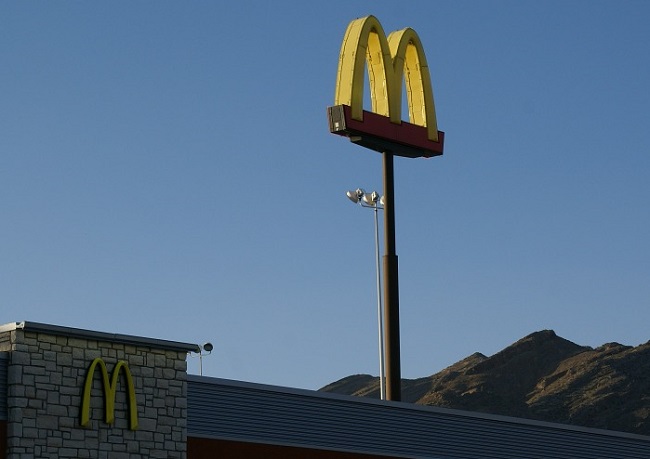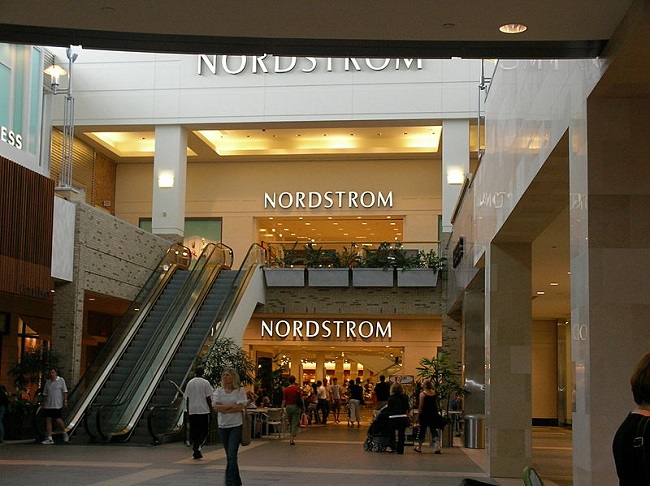As the fast food chain scrambles for a more healthful image, its wearable tech effort flops.
For a very short time, kids were finding McDonald’s fitness tracker devices in their Happy Meals. This wearable technology gadget was taking the place of the traditional toy the company ads to its kids’ meals.
Shortly after rolling out the Step It wearable technology, kids started complaining of skin irritations.
The McDonald’s fitness tracker made headlines and drummed up a lot of attention for the Happy Meals. However, shortly after its August 9 roll out in the United States and Canada, it was removed. The removal of the wearables was voluntary by the fast food chain. It was in response to several complaints of wrist irritation from wearing the Step It activity bands.
 A spokesperson from the company released a statement. It said “We have taken this swift and voluntary step after receiving limited reports of potential skin irritations that may be associated from wearing the band.”
A spokesperson from the company released a statement. It said “We have taken this swift and voluntary step after receiving limited reports of potential skin irritations that may be associated from wearing the band.”
The McDonald’s fitness tracker is under investigation to determine the source of the skin issue.
The spokesperson underscored that the safety of their customers is of their highest priority. They are conducting a thorough investigation into the problem with the wearable technology band. In the meanwhile, an alternative Happy Meal toy is being distributed to children.
The Step It activity tracker was essentially a pedometer that was worn on a child’s wrist. It was a very basic device meant to promote activity. It provided blinking lights to encourage kids to keep up the good work when they were moving around.
The wearable tech device was designed with four buttons. The first was a power button. The other three let the child identify his or her activity. Activities included: walking, jumping rope and general sports. This allowed the device to more accurately track the type of motion it was sensing.
The McDonald’s fitness tracker isn’t the first wearable technology to have been taken down from skin irritations. The current ruler of the activity band market, Fitbit, once suffered similar struggles. Its own first wearable had to be recalled in 2014 and in 2015. The Fitbit Surge has also received some complaints regarding skin irritations.
The luxury department store reported considerable sales increases in this year’s second quarter.
Nordstrom mobile commerce gets the credit for powerful online sales growth for the luxury department store. The company has released its 2016 Q2 earnings report. The report showed strong mobile engagement.
This powerful growth over mobile commerce occurred despite an overall decline in total sales in all channels.
Nordstrom mobile commerce is now outpacing shopping over laptop and desktop computers. In fact, the retailer has credited m-commerce for much of its current online successes. Shoppers using smartphones and tablets played an important role in the quarter’s e-commerce results.
This shift toward mobile shopping did not occur by accident. Nordstrom has been making considerable investments into mobile tools. The company wants customers to be engaged over their mobile devices.
Nordstrom mobile commerce was a high priority in Q2 2016 as the company focused heavily on its app.
 The Nordstrom report revealed considerable insight into the company’s performance during the second quarter. It also underscored the power of mobile shopping as the company placed a focus on its smartphone app.
The Nordstrom report revealed considerable insight into the company’s performance during the second quarter. It also underscored the power of mobile shopping as the company placed a focus on its smartphone app.
Among the insight provided in the report was the following:
• Nordstrom saw a year over year decline in total sales. They reached $3.5 billion, which was a drop of 1.2 percent over the same quarter in 2015.
• Total online sales for the company increased by 9.4 percent, year over year. In the second quarter of this year, they reached $683 million.
• Total off-price retail site sales and flash-sale site (HauteLook) sales exploded by almost 35 percent. This was a massive growth over the same quarter in 2015 as it reached $157 million.
The added investment into the Nordstrom mobile commerce app drove performance significantly. The company worked hard to ensure the mobile app would be highly engaging. Among the top features was one that allowed customers shop from specific store locations as well as a visual search function. Co-president and director of the company, Erik B. Nordstrom, explained that this effort was precisely what propelled m-commerce forward and beyond desktop during that quarter. It also explains why the retailer will continue to move in that direction.
![]() A spokesperson from the company released a statement. It said “We have taken this swift and voluntary step after receiving limited reports of potential skin irritations that may be associated from wearing the band.”
A spokesperson from the company released a statement. It said “We have taken this swift and voluntary step after receiving limited reports of potential skin irritations that may be associated from wearing the band.”
 The Nordstrom report revealed considerable insight into the company’s performance during the second quarter. It also underscored the power of mobile shopping as the company placed a focus on
The Nordstrom report revealed considerable insight into the company’s performance during the second quarter. It also underscored the power of mobile shopping as the company placed a focus on 